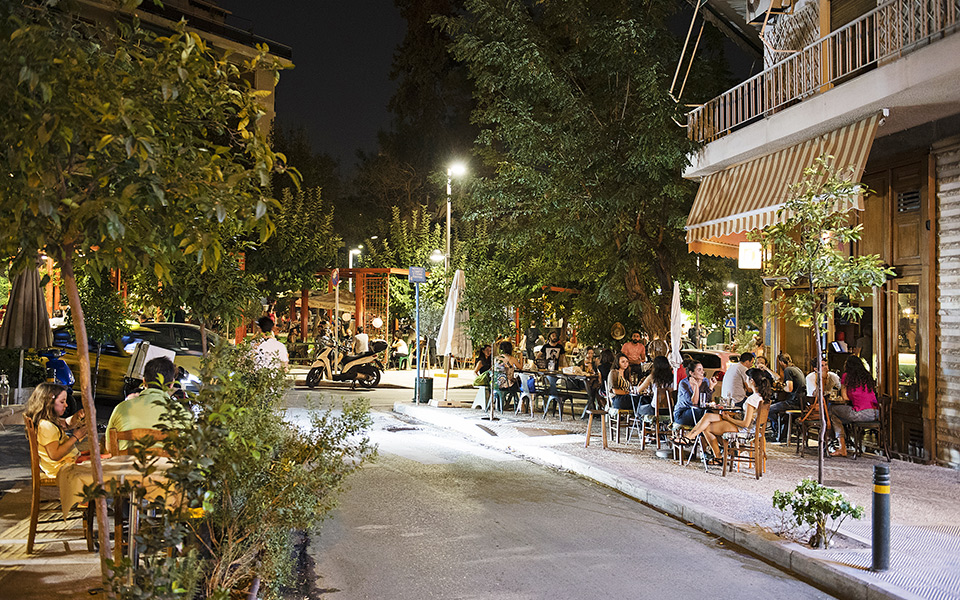Let’s step back in time: it’s ten years ago, and Athens is preparing to host the Olympics. The metro has just entered our lives and, just outside Keramikos station, the district of Gazi begins to emerge from under the scaffolding. At the same time, the historical triangle in downtown Athens sees a huge surge in commercial activity and Karytsi Square becomes the center of the city. Slowly the younger generation discovers Petralona and explores Metaxourgeio, then Pagrati, Mets and Koukaki. Now, fast-forward to the present, and today Kypseli, too, is slowly reappearing on the city’s map.
Areas that once formed the core of the Athenian population and gradually degraded when people began moving to the suburbs have acquired a new character today, and the key difference is the presence of a new generation. Young Athenians who grew up in the ‘80s and ‘90s have discovered a forgotten city, with cheap rents, that they can use to create a new base in which to live, relax and socialize.
“The old districts of downtown Athens where Athenians lived during the war have a particular urban character which distinguishes them from the newer suburbs. This character is shaped by the architecture, the mix of populations and the new human geography of the city,” says architect Panos Dragonas of the firm deltArCHI. “In the arc of the districts under Lycabettus, from Pagrati to Patissia, the architectural identity of Athens is determined by modern apartment blocks of the interwar period as well as post-war apartment buildings and office buildings which have established themselves as key components of the city’s image.”
In addition to the architectural landscape, a strong feature of this wider Athenian center is the existence of countless crowded cafés, bars and restaurants. In recent years, new establishments have been popping up with regularity around squares, on pedestrianized streets, in arcades and courtyards, on terraces and even just on the sidewalks. “The new generation is testing parts of the city that it feels are more substantial, creating places and finally winning over the older generation, too,” says Nektarios Kefalas, who has been active in the entertainment sector for many years.
“Before the crisis, we thought that the crowds would go wherever the metro went, but it’s not so. New hives of activity appear where the atmosphere is nice, near neoclassical buildings, along pedestrianized streets, in neighbourhoods that feel like neighborhoods. The center is full of such places.” Kefalas is the owner of Fabrica De Vino, a wine bar on Benaki Street, as well as of the brasserie Barley Cargo on Kolokotronis Street, the road which, in the last decade, has become the backbone of the city’s nightlife, along with Aghias Eirinis Square a little further on and, more recently, with Ipitou Street as well, where the teeming Saturday night crowds often resemble a demonstration more than a night out.
“New hives of activity appear where the atmosphere is nice, near neoclassical buildings, along pedestrianized streets, in neighbourhoods that feel like neighborhoods. The center is full of such places.”
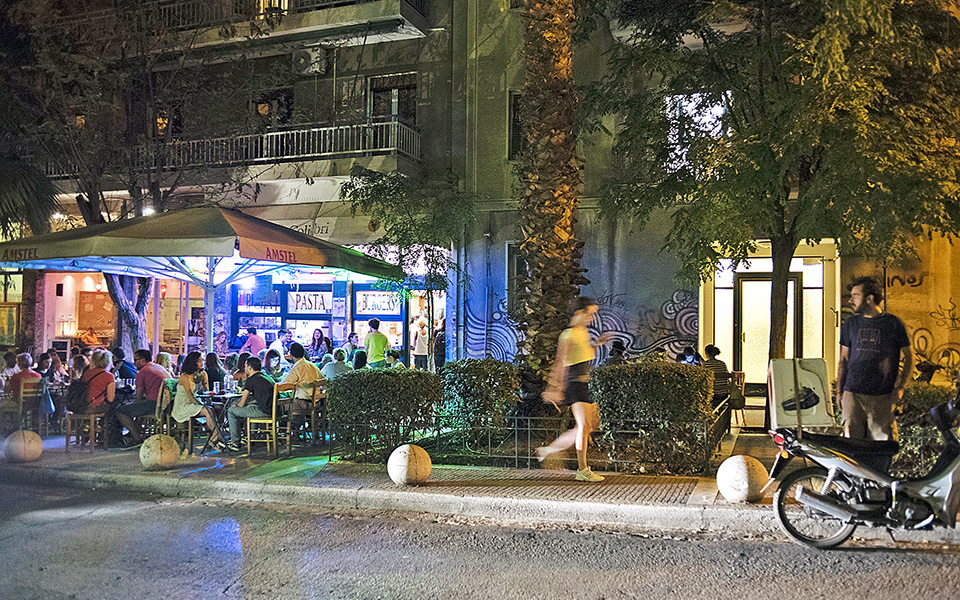
© Vangelis Zavos
Pagrati and Petralona
For years, Pagrati was known as a boring place where you could never find a spot to park in. Now, it’s one of the most popular destinations in the city’s nightlife (and you still can’t find parking). How did this turnaround happen? “It’s close to everything,” says Christina Achillia, “and people have a need for safety and companionship in their neighborhoods.” Christina and two former classmates of hers moved from the southern suburbs to Pagrati seven years ago. “We wanted to be closer to the center, but we just liked it here as well,” she explains. “You know, the roads, the paths, the houses, the atmosphere; it was all positive.”
The three of them, who watched as their new area went through an unprecedented boom, soon tired of their day jobs and finally decided a year ago to open their own place: Skazi, a cozy cafe-bar near the now-popular Varnava Square. Like their venture, the other establishments around the square share a common retro feel and exude an aura of urban warmth.
Christina notes that the area’s older residents are socially mobile and spend time with groups of younger people half their age. This is something confirmed by Mr. Dragonas:Young Athenians who grew up in the ‘80s and ‘90s have discovered a forgotten city, with cheap rents, that they can use to create a new base in which to live, relax and socialize.
The problem is when that regeneration spirals out of control, something that has happened to a degree in Petralona. Christophoros Mitropoulos lived in the area before it became fashionable; in 2008, along with two other people, he opened a cafe-bar called Braziliana on Mercouri Square. His was one of the first shops in Ano Petralona; it was essentially what put the area on the map for evening entertainment. “People would come, and they’d be interested in the neighborhood,” he recalls. “It’s a very beautiful place, they wanted to know it better and eventually they moved here. One would bring the other, they started to open up new eateries and places to drink, the old coffee shops turned into stylish cafés and, of course, now the downturn has started.”
The physiognomy of the neighborhood changed, and the older people began to complain. “They’re upset with the new places, but I think they should take it up with whoever approved so many licenses for so many new spots to open without giving any thought to preserving the character of the area,” says Mitropoulos. “Now most of these businesses are underperforming. On weekends there are people, but not as many as before.”
“Young Athenians who grew up in the ‘80s and ‘90s have discovered a forgotten city, with cheap rents, that they can use to create a new base in which to live, relax and socialize.”
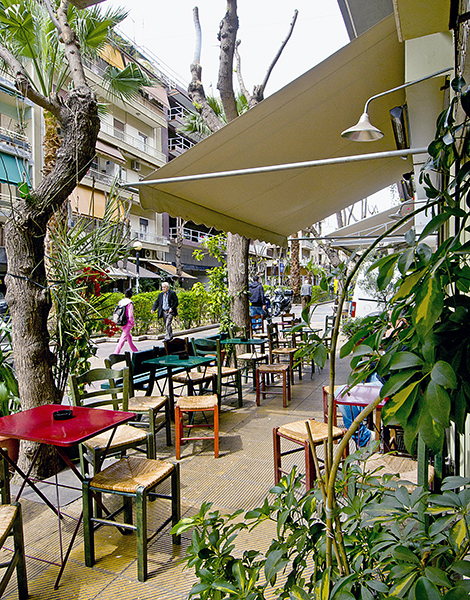
© Clairy Moustefellou
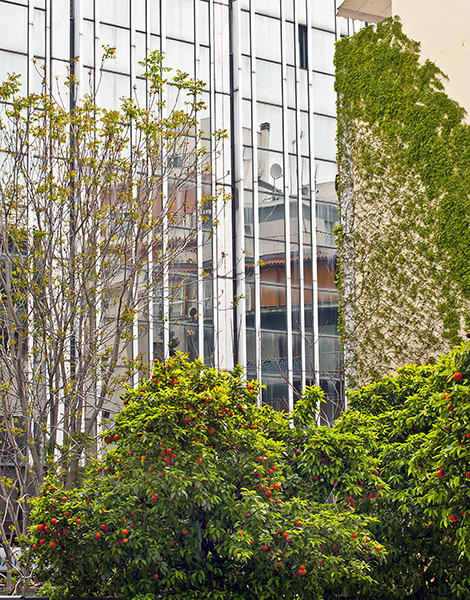
© Clairy Moustefellou
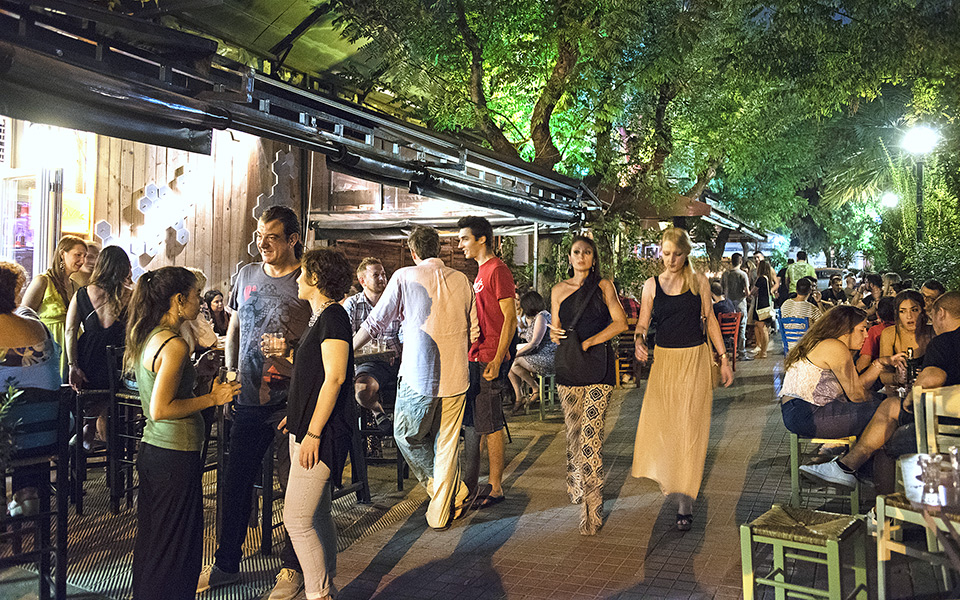
© Vangelis Zavos
Eb and flow
For Petralona to fill up like it used to meant, of course, that somewhere else had to empty out. The center and its surroundings are like interconnected channels. Exarchia and Kolonaki are not living their best days, but the cycle will complete itself and, eventually, they will be on the up again. This is what happened with the neighbourhood of Psyrri, which was declining about a decade ago, but which today has regained momentum.
Koukaki, an area near the center that sits in the shadow of the Acropolis, benefited from the location of the Acropolis Museum and from being just two subway stops from the heart of the center. Here, in the midst of a number of already successful neighborhood hangouts, a new social hotspot arose.
A classic example of this change in fortunes is the neighborhood of Metaxourgeio, which had deteriorated dramatically. Over the last few years, the abandoned neoclassical buildings that share the area with drug addicts and brothels have become home to art galleries and esthetically pleasing bars, raki joints and good restaurants. Its transformation, while by no means complete, is nonetheless astonishing when contrasted with the way the area used to be.
While it’s true that suburban neighborhoods each have their own personalities, that doesn’t mean that the center is completely uniform. Each of its smaller regions has its own culture, aesthetics and loyal group of regular patrons. In fact, even two places across the street from one other can be miles apart in style.
But there will be similarities, too. “They can’t ignore the characteristics of the center,” says Dragonas, “things such as the climate and the outdoor life, the particularly Athenian style of traditional and modern architecture, the old courtyards, the central arcades or the view from the terraces, all of which are highlighted in inventive ways by our young designers. Still, we cannot ignore the dynamic being generated, the constant movement, the whispers and the passions of the city. There is the sense of the new, the belief that something is happening.”
It is, of course, in the nature of cities to create that sense of the new, to reinvent their own spaces to accommodate new ideas and new ways. In a sense. It’s how cities recycle, pushing their residents to rediscover areas and create different atmospheres and alternate uses for them. The places that are popular today will eventually fall out of fashion as well, and other corners will get all the attention. But for now, the center of Athens is again an exciting and energetic environment, filled not only with people but with myriad possibilities.
“Each of its smaller regions has its own culture, aesthetics and loyal group of regular patrons. In fact, even two places across the street from one other can be miles apart in style.”

